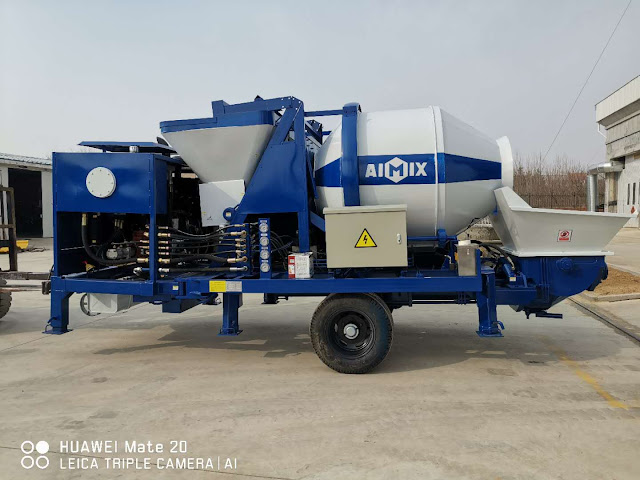What Effect Does Weather Have on Concrete Pumping and Placement?
Weather conditions play a crucial role in the success of concrete construction projects, particularly in pumping and placement. Extreme temperatures, rain, wind, and humidity levels can affect the workability, strength, and durability of concrete, posing challenges for contractors. Using a concrete pump improves efficiency by allowing faster placement, but adverse weather conditions still require careful planning and adjustments. In this article, we’ll explore how different weather conditions impact concrete pumping and placement and how contractors can mitigate these effects.
Hot Weather and Concrete Pumping Challenges
High temperatures accelerate the hydration process of cement, causing concrete to set faster than usual. While this may seem beneficial, it creates several challenges during pumping and placement:
-
Reduced workability – Rapid evaporation of moisture makes the mix stiffer, requiring additional water or admixtures to maintain flowability.
-
Increased risk of blockages – In extreme heat, concrete can dry too quickly within the hoses, leading to pump(bomba de concreto) blockages.
-
Shrinkage and cracking – Quick drying increases the likelihood of shrinkage cracks, reducing the overall strength of the structure.
Solutions for Pumping Concrete in Hot Weather
To combat these issues, contractors can:
-
Use concrete retarders to slow down the setting time and maintain workability.
-
Store raw materials in shaded areas to prevent excessive heating.
-
Spray water on aggregates before mixing to keep the overall temperature down.
-
Schedule pumping for early morning or late afternoon when temperatures are lower.
A concrete mixer pump can help by allowing continuous mixing and immediate placement, reducing the risk of premature setting.
Cold Weather and Freezing Risks
Cold weather slows down the curing process, making it harder for concrete to develop strength. If temperatures drop too low, water within the mix can freeze, leading to structural weaknesses. Common challenges include:
- Extended curing times – Cold temperatures slow down the hydration process, delaying project completion.
- Risk of frozen water in the mix – Ice formation inside the mix causes expansion, leading to cracks.
- Thicker, less workable concrete – Cold conditions make concrete more difficult to pump and place.
Best Practices for Pumping Concrete in Cold Weather
To ensure smooth operations in freezing temperatures, contractors can:
- Use heated water and aggregates to maintain a suitable mix temperature.
- Insulate hoses and pipelines to prevent concrete from freezing during pumping.
- Use accelerators to speed up the setting process.
- Protect freshly placed concrete with thermal blankets or enclosures to retain heat.
When searching for a concrete pump for sale(bomba de hormigón en venta), it’s beneficial to look for models with built-in heating features to prevent equipment freezing.
Rain and Moisture-Related Issues
Excess moisture from rain can alter the composition of concrete, making placement more difficult. Heavy rainfall during concrete pouring presents challenges such as:
- Diluted concrete mix – Excess water weakens the mix, reducing overall strength.
- Erosion of freshly placed concrete – Rainwater can wash away the surface layer, leading to an uneven finish.
- Difficulties in curing – Uncontrolled moisture affects curing times, potentially weakening the final structure.
How to Overcome Rain-Related Challenges
To prevent rain from disrupting concrete pumping, contractors should:
- Cover the work area with temporary enclosures or tarps.
- Use waterproofing additives in the mix to reduce moisture absorption.
- Adjust mix proportions to account for extra water if rainfall occurs unexpectedly.
-
Delay pumping if heavy rain is expected, unless working in covered areas.
A concrete mixer pump(bomba hormigonera) provides an advantage in wet conditions by allowing on-site mixing, reducing the risk of excessive moisture before placement.
Wind and Its Impact on Concrete Placement
Strong winds pose significant challenges in high-rise construction and outdoor concrete pouring. The key issues caused by wind include:
- Increased evaporation – Wind speeds up water loss from the mix, leading to rapid setting and shrinkage cracks.
- Difficulty in precise placement – Wind can disrupt the flow of concrete from the pump hose, making accurate pouring difficult.
- Safety hazards – Unstable booms and swinging hoses create risks for workers operating at heights.
Managing Windy Conditions During Concrete Pumping
To ensure proper placement in windy weather, contractors can:
- Use wind barriers to shield the work area from strong gusts.
- Adjust the mix by adding plasticizers to improve flowability.
- Secure boom pumps and pipelines properly to prevent movement.
- Avoid pumping in extremely high winds to reduce safety risks.
Using a concrete pump with advanced control features helps maintain stability and ensures precise placement, even in challenging wind conditions.
Humidity and Its Influence on Concrete Performance
Humidity levels also affect the behavior of concrete during pumping and placement. High humidity can:
- Slow down the evaporation process, leading to longer setting times.
-
Increase the risk of bleeding (water rising to the surface), weakening the concrete structure.
-
Affect adhesion in vertical applications, making formwork removal more difficult.
Conversely, low humidity accelerates drying, increasing the risk of shrinkage cracks.
Strategies for Controlling Humidity Effects
-
In high humidity, use dehumidifiers or controlled drying methods to regulate curing.
-
In low humidity, use curing compounds to retain moisture and prevent cracking.
-
Adjust the water content in the mix to maintain proper consistency.
Selecting a concrete pump for sale with variable speed controls and advanced pumping technology can help adapt to different humidity conditions for consistent results.
Conclusion
Weather conditions significantly impact concrete pumping and placement, requiring contractors to take proactive measures to ensure quality and efficiency. Whether dealing with extreme heat, freezing temperatures, rain, wind, or humidity, proper planning and equipment selection are essential. Investing in a concrete mixer pump can help improve on-site concrete production, while choosing a concrete pump with weather-resistant features ensures smooth operations in all conditions. For those looking for a concrete pump for sale, considering climate adaptability will lead to better long-term performance and durability in any environment.





Comments
Post a Comment